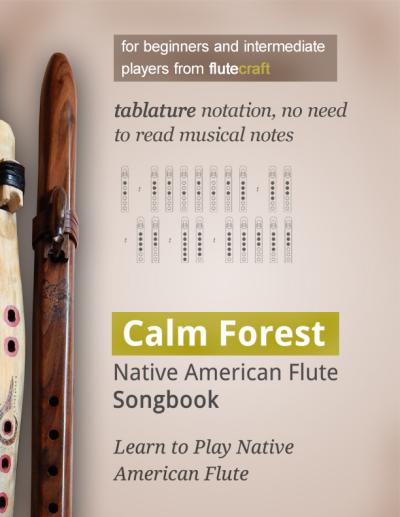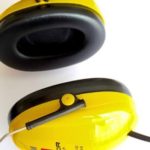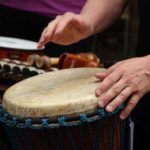Over the last few months (all right, years), I’ve collected a number of common questions people ask about Native American style flutes. I thought I might answer some of them in a series of articles, that, I admit, is slow to come, but here’s the first part! I will answer some of the questions in text, and some of the questions in links, since I already published a couple of useful articles.
And don’t forget you can ask your own questions :).
What is the Best Native American Flute for Beginners?
Assuming you’re an absolute beginner, I take three things into consideration: the flute has to be well made, so you won’t be dissapointed; the flute has to be easy to play; and the shipping has to be safe.
Thus, I suggest buying a NAF in the key of A made by High Spirits. It’s the perfect balance between price, safety of on-line shopping and quality.
Most flutes in the key of A has a well-balanced tone between high and low pitch, and the space between finger holes isn’t too big, so it’s safe to say that no matter what your fingers span and hand size is, you will be able to play it.
Once you’re good with the A flute, you can explore the variety of the flutes further, and see what other keys you like.
What is the Best Wood for Native American Flute?
I believe this question has two sides: first, which wood should you consider when buying a NAF, and second, what kind of wood should you use when building Native American flute.
Basically, there is no such thing as the best wood for Native American flute. It does matter, though, for both players and makers. Less experienced woodworkers will prefer softwood, such as pine or cedar, since hardwood, such as walnut, is harder to work with.
Now, when it comes to playing a flute, it all comes down to personal preferences. Hardwood flutes (such as walnut) sound a little harsh, “colder”, while softwood flutes are more mellow and warm in their sound. But it’s not always the case, and as I said, it’s personal. You really need to listen to a flute a decide for yourself.
Personally, I love aromatic cedar – it’s a softwood, the sound is warm, and the wood smell is beautiful!
How do Native American flute work?
You blow the air into the mouthpiece, the air travels into the first chamber inside the flute, the it goes through a small channel called “a flue” and into something called “true sound hole” – which is the hole you see on your flute.
Take a look at the photo below. This flat air channel is the flue – the air comes from the left hole, and into the right hole.

Real nest explained.
There’s a splitting edge there – when the air stream is split, physics produce the sound (as Kyle would say, because science! Look it up on YouTube if you don’t get it). Everything else is all about the diameter of the flute – the longer the tube, the lower the sound – and again, it’s all about the physics.
How do You Make a Native American flute?
I have published a series of tutorials for building NAF out of branches. The same rules apply to standard wood you can get in some kind of home depot store.
Take a look at the entire category of posts:
The main tutorials cover the “branch flutes”, that is Native American style flutes made of branches. But the same rules apply to any kind of wood. There are also articles about tuning Native American flute, so you can tune the instrument to minor pentatonic scale.
How do You Play a Native American flute?
I published a couple of articles on this subject:
- How to play Native American flute – the Basics
- Native American Flute and How to Practice Rhythm
- Harmony for Native American Flute Players – The Basics
I also recommend great book by Carlos Nakai, The Art of Native American Flute.
Basically, books and YouTube tutorials are everything you need to learn how to play Native American flute :).
And I have published a small book, as well – https://www.amazon.com/Calm-Forest-Native-American-Songbook-ebook/dp/B01ABWTK02.
How do You Tune a Native American flute?
You can tune the NAF only during construction. Most flutes of this type are made a solid piece of wood. Some creative woodworkers experiment with creating flutes that can be tuned by expanding and contracting the sound chamber, but this is not standard for this kind of instruments.
So basically, you do not tune a Native American flute. Once it’s made, it remains in the key it was made in. I’ve linked an article about tuning in the of the previous answers above.
How Long is a Native American flute?
Anything from 15 to 50 cm when it comes to sound chamber length. Add about 15 to 20 cm of the air chamber and that’s how long the flute is. Some flutes can be even longer, because some makers build flutes in lower keys (as a bass Native American flute).
How Much Does a Native American Flute cost?
I’ve seen flutes for $50, I’ve seen flutes for $500.
A reasonable flute costs about $60 for a small pocket flute, through $150 for a nice flute in the key of G, to $250 for a bigger key of F#. Basically, most flutemakers sell their instruments of such or similar size and key in similar prices.
Price may vary from maker to maker, and from wood to wood (some kinds of wood are more difficult to work with than other, so they can be a bit more expensive).
Double or triple flutes (drones) are even more expensive, since you get two or three flutes merged into one.
There are some awesome handmade flutes out there, some made from unique branches, some made with machines but utilizing unique decorations and ornaments, and some simply made by very respectved flute makers, and they can cost $500 or sometimes even more. Dryad Flutes are sold for nearly $2000, but they’re really collectors items – they’re unique, one of a kind, and very well made.
Is the Native American flute hard to play?
Absolutely not – it’s problably the easiest flute (of whistle type) to play. It’s easier than tin whistle and easier than recorder. It’s because the way the flute is built makes it a well-balanced instrument in terms of sound and the physics behind this sound. Next, we have the scale, minor pentatonic with five (or sometimes six) fingerholes, which is a well-balanced musical scale with very harmonious sounds. This basically means that no matter what holes you use, as long as you stick to the very, very simple and very, very basic fingering rules, you will create nice music.
What is the Native American flute range?
Native American flute is a tuned instrument, which means its tuning cannot be changed. The flute comes in many various keys, and most popular are A, G, F# and E in the middle range (the 4th octave). Each flute’s range is about an octave and a half, but that “half” part requires a bit different fingering and sometimes, flutes cannot play that extended range due to minor errors in construction.
So it’s safe to say that the Native American flute’s range is a full octave.
What Scales can the Native American Flute Play?
Minor pentatonic is the basic scale a NAF can play. It uses five finger holes. A flute that has six finger holes can play many more scales.
Here’s an article with a lot of great scales you can play on Native American flute.
Basically, look for six-holes flutes when shopping. You can always keep that sixth hole closed all the time and not worry about it.
***
Do you have other questions? Ask them in the comments below, or via Facebook’s page: FluteCraft.
Don't forget to become a fan on Facebook and subscribe to new posts via RSS or via email.










 via EMAIL
via EMAIL